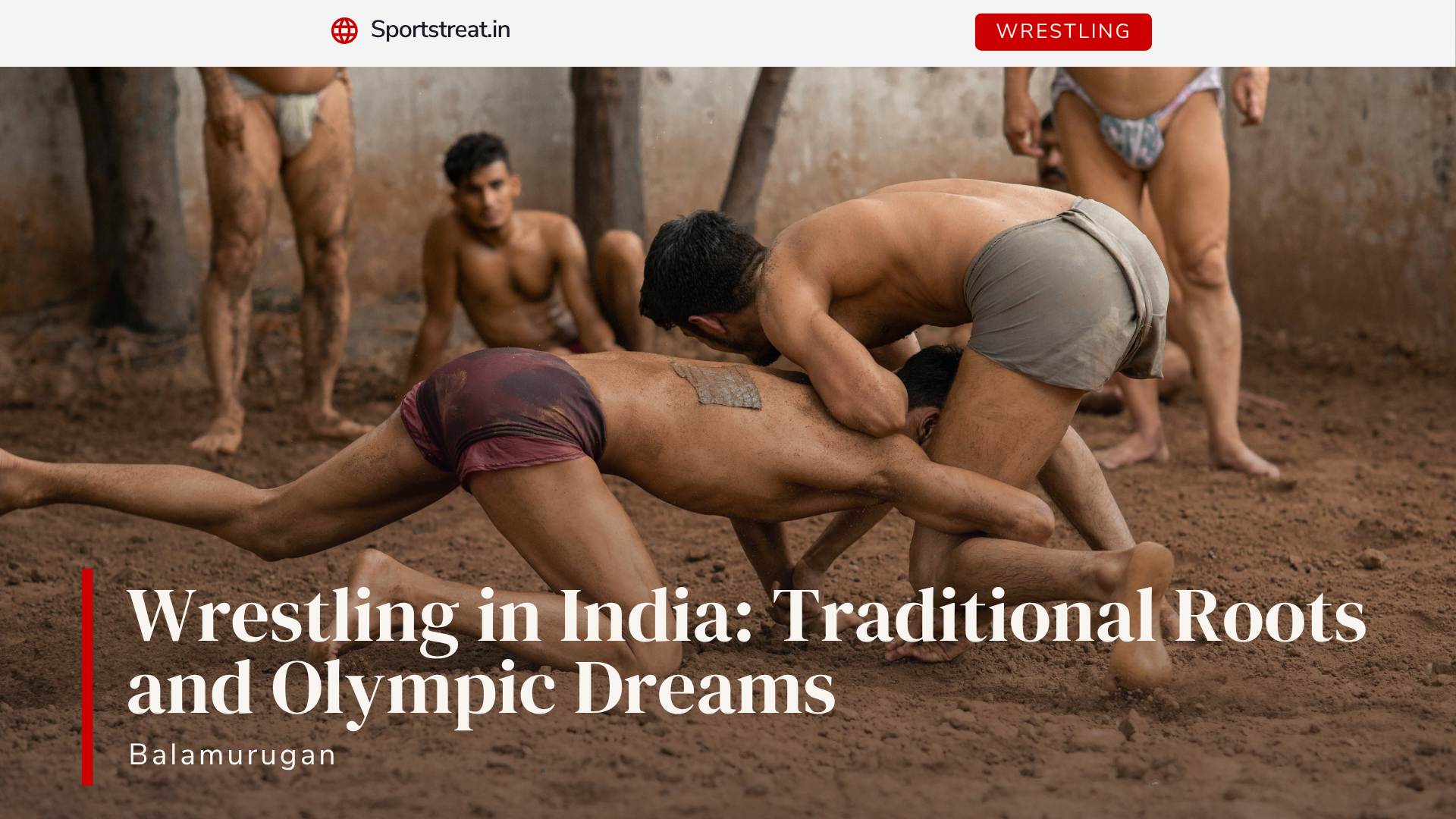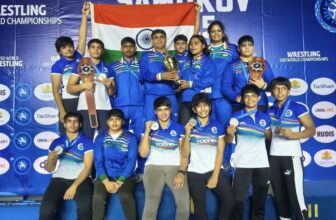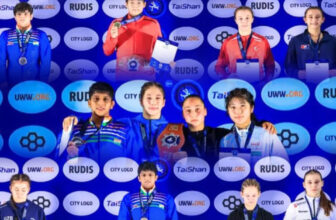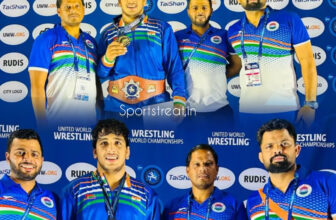
Introduction
Wrestling stands among India’s oldest and most historically rich traditions, profoundly shaping the country’s physical culture and sporting identity. What began as a martial exercise in ancient villages has grown into a modern sporting pursuit, producing Olympic heroes and captivating millions. The story of Indian wrestling is one of deep respect for tradition, cultural continuity, and the persistent dream of standing atop the Olympic podium.
Ancient Roots of Wrestling in India
Foundations in the Epics
Wrestling in India traces its earliest roots to malla-yuddha (“combat of wrestlers”), an ancient form of hand-to-hand combat documented in the Ramayana and Mahabharata. Mythic warriors like Bhima, Hanuman, and Balarama are all celebrated for their wrestling prowess—a testament to the sport’s prestige throughout history.
Malla-yuddha was far more than a game. It was a science and discipline, demanding physical and mental mastery, taught in royal courts and revered as both fitness regimen and spiritual pathway.
Early forms emphasized not only victory over opponents but also self-control, humility, and virtue.
Vedic and Martial Heritage
References to wrestling can be found in the Rigveda and later Vedic texts, where physical strength was symbolic of virtue and a young man’s readiness for community and battle. Through centuries, wrestling was imparted as a martial skill, often deciding disputes and even battles between rival clans or kingdoms without resorting to bloodshed.
Evolution Through the Ages
Influence of the Mughal Era
A significant transformation of Indian wrestling came in the 16th century, with the arrival of the Mughal Empire. Court patronage introduced Iranian and Central Asian techniques, blending them with the indigenous traditions, eventually leading to the creation of Pehlwani or Kushti—the style that dominates Indian wrestling today.
Noted Mughal rulers, including Babur, were accomplished wrestlers, and their enthusiasm elevated the sport among both royalty and masses.
Wrestling tournaments and Dangal became features of cultural and festive life in towns and princely courts.
The Akhara: Heart of Tradition
The Akhara, or traditional wrestling school, became the nucleus of the wrestler’s world. These mud-pit arenas are still present today, especially in northern and western states.
The Akhara is as much a spiritual and communal haven as a place of physical training.
Wrestlers, called Pehlwans, adhere to strict codes focused on celibacy, vegetarian diet rich in milk and ghee, daily prayers, and communal living aimed at strengthening both body and character.
Regional Variants and Folk Styles
While Pehlwani is the most recognized form, India’s vastness has shaped distinct regional styles:
Gatta Gusthi: Traditional submission wrestling in Kerala.
Inbuan: Unique to Mizoram; includes strict rules on body movement.
Kene: The wrestling tradition of Nagaland, often performed during festivals.
Malakhra: Practiced in Sindh (now in Pakistan) and Gujarat, characterized by swinging opponents by a cloth girdle.
Mukna: A style from Manipur, with roots in local mythology.
Vajra-mushti: An ancient form that includes the use of knuckle dusters.
Malyutham: A Tamil folk style emphasizing technical grappling.
These diverse styles are integral to local fairs and rituals, fueling community pride and preserving ancient technique.
The Wrestler’s Life: Culture, Training, and Discipline
Daily Routine
The life of an Indian wrestler is defined by discipline and devotion, often starting before dawn and revolving around the Akhara. A typical day includes:
Exercise: Rope climbing, pushups, squats (baithaks), running, and traditional equipment like the gada (mace).
Sparring: Daily bouts in the mud, employing classic holds, throws, and pins.
Diet: A strict, mostly vegetarian diet—milk, almonds, ghee, fruits, and lentils predominate. The avoidance of intoxicants and even marital relations is common, fostering mind-body focus.
Rest and Massage: Regular massages with oils enhance muscle recovery, and sleep is prioritized.
Spiritual Practice: Many wrestlers integrate yoga, meditation, and prayers, considering wrestling a sacred calling.
Values and Legacy
Akhara life is founded on values such as self-restraint, humility, and mutual respect—a brotherhood that transcends the competitive aspect. Pehlwans are often venerated as local heroes, and veterans frequently serve as Ustads (gurus) who train the next generation, passing down both technique and philosophy.
Wrestling as Cultural Institution
Festivals, Fairs, and Community Life
Wrestling is a social cornerstone in many Indian villages and towns. Dangal tournaments—fiercely contested bouts attended by crowds—are highlights of regional fairs and festivals. Victories earn respect and sometimes local stardom, while upholding family or village prestige.
The sport also carries a role in social cohesion, as dangal is often accompanied by music, ritual prayers, and feasting, embedding wrestling in the community’s collective memory.
Patronage and Popularity
Historically, wrestlers enjoyed the patronage of local princes, zamindars, and royals, who would host tournaments and offer prizes. Even today, politicians and businessmen often support local Akharas, recognizing their influence in inspiring youth and fostering discipline.
Wrestling in Colonial and Post-Independence India
During British rule, wrestling symbolized resistance and Indian identity, surviving alongside cricket and hockey. Urbanization and industrialization posed new challenges, but wrestling, with its village roots and simplicity, endured.
The post-independence era saw Akharas give way, in some places, to modern gyms and international wrestling mats. Yet, the essence of the Akhara—mud wrestling and communal spirit—survives in many parts of the country.
Modernization and Transition
Since the late 20th century, Indian wrestling has embraced global influences:
Wrestlers train for both Pehlwani (traditional) and freestyle/Greco-Roman (Olympic) disciplines.
Facilities like the famed Chhatrasal Stadium Akhara in Delhi now incorporate sports science and nutrition alongside classical training.
The Olympic Dream: India on the World Stage
Early Participation and Breakthroughs
Wrestling was part of India’s first Olympic team in 1920, and participation continued in subsequent Games. The breakthrough arrived at the 1952 Helsinki Olympics, where Khashaba Dadasaheb Jadhav won India’s first individual Olympic medal, a bronze in men’s freestyle wrestling. This historic moment not only inspired sporting ambition in post-independence India but also underlined wrestling’s role in national identity.
Years of Struggle and Resurgence
Despite early promise, medals remained elusive for decades. Several Indian wrestlers came heartbreakingly close—finishing in fourth or fifth place—but gold proved difficult. The tide began to turn in the new millennium:
Sushil Kumar won bronze at the 2008 Beijing Olympics and upgraded to silver in London 2012, becoming a national icon and role model.
Yogeshwar Dutt clinched bronze at the 2012 London Olympics.
Sakshi Malik broke new ground as India’s first female wrestling Olympic medalist with bronze at the 2016 Rio Olympics.
Recent years: Ravi Kumar Dahiya (silver, 2020), Bajrang Punia (bronze, 2020), and Aman Sehrawat (bronze, 2024) have continued India’s podium momentum.
Wrestling is now India’s second most successful Olympic sport, behind only hockey.
Famous Names and Akharas
The Phogat family of Haryana, chronicled in the popular film “Dangal,” has produced multiple international champions, helping catapult women’s wrestling to prominence.
The Chhatrasal Akhara in Delhi stands as the country’s preeminent wrestling academy, nurturing talent for both national and Olympic competitions.
Coaches like Satpal Singh have fostered generations of medalists.
Women’s Wrestling: Breaking Barriers
Traditionally a male domain, the past two decades have seen a revolution in women’s wrestling in India:
Sakshi Malik’s Olympic success tore down social and cultural barriers, inspiring young girls nationwide.
Wrestlers such as Geeta Phogat, Babita Phogat, and Vinesh Phogat achieved international glory, shifting perceptions and generating new opportunities.
Grassroots programs and changing attitudes are making Akharas and wrestling academies increasingly accessible to women, further diversifying and strengthening the sport.
Training, Science, and Modernization
The New Akhara
Elite Indian wrestlers today split time between mud Akharas—retaining their traditional touch—and modern, mat-based gyms equipped with world-class amenities:
Sports medicine, physiotherapy, and nutrition are now routine.
Mini-Olympic centers and government initiatives provide scholarships and international training opportunities.
Wrestlers often attend training camps in Russia, Iran, the USA, and Eastern Europe, gaining exposure to global competition.
Lifestyle and Challenges
Contemporary wrestlers must balance tradition and international standards—retaining Akhara discipline while mastering Olympic techniques. They face challenges including:
Funding: Access to global coaching and nutrition often remains unequal.
Infrastructure: While urban centers excel, many rural Akharas lack resources for mats, equipment, and medical care.
Judging and Doping Issues: Indian wrestling has not been immune to controversy, from biased decisions to doping scandals—a reminder of the vigilance needed as the sport globalizes.
Wrestling and Indian Identity
Wrestling, more than exercise or entertainment, is a cultural touchstone linking generations—evoking village fairs, ancient myths, and new-age aspirations alike.
It bridges rural and urban, poor and rich, old and young.
Wrestlers are seen as icons of endurance, morality, and personal discipline.
The sport’s deep association with national pride—especially at the Olympics—inspires millions to chase the dream of bringing home a gold.
The Future: Olympic Gold and Beyond
The future of Indian wrestling is bright, poised between the deep soil of tradition and the ambitions of modern sport:
Youth Programs: Intensive scouting and support from sports authorities and private academies are unearthing raw talent at a young age.
Women’s Revolution: As social barriers recede, more girls are entering the sport than ever before.
Global Acclaim: Indian wrestlers are now regulars on World Championship podiums and international leagues, gaining recognition and lucrative opportunities abroad.
Grassroots Spirit: Local Dangal tournaments continue to produce tough, grounded performers who thrive on the big stage.
Yet, the ultimate dream—a gold medal at the Olympic Games in wrestling—remains a hunger felt across generations. Recent near-misses and podium finishes only fuel this national vision, blending the wisdom of the Akhara with the relentless pursuit of international excellence.
Conclusion
Wrestling in India is both an ancient calling and a modern quest. Steeped in myth, shaped by centuries-old customs, and energized by new hope, it stands today as a living symbol of the Indian spirit—a blend of humility, discipline, and boundless ambition. From epic mud pits to gleaming Olympic arenas, Indian wrestling carries forward a heritage that inspires, unites, and aspires. The traditional roots nurture dreams of gold, ensuring the sport’s enduring legacy in the heart of a nation.






